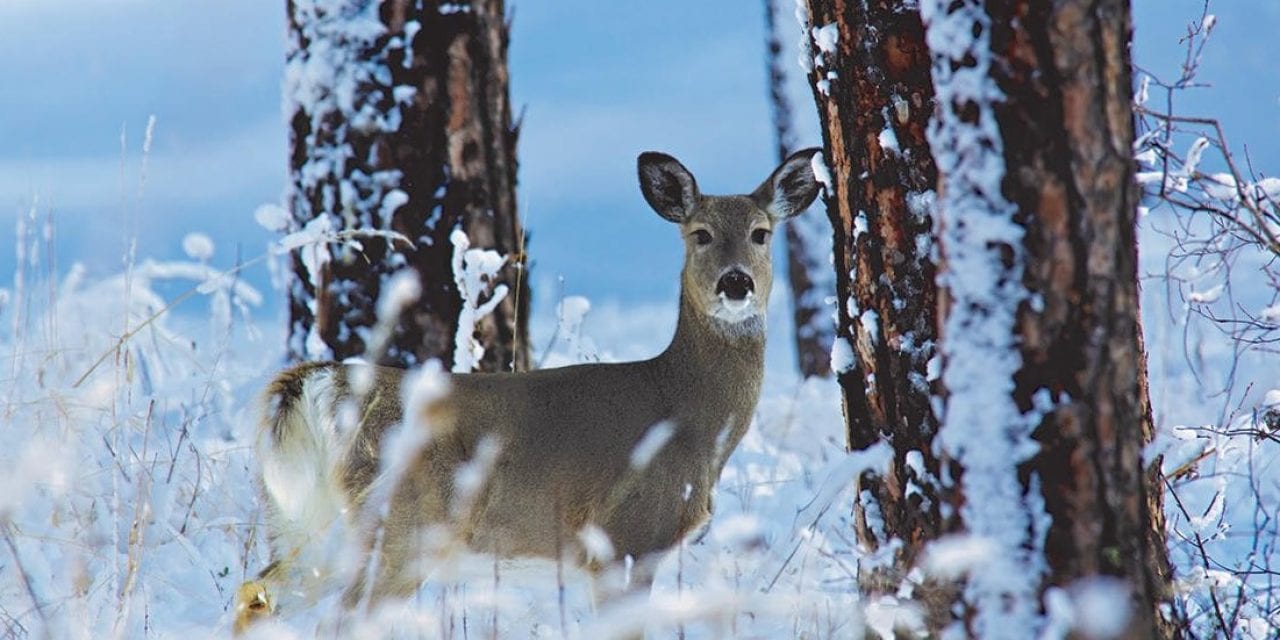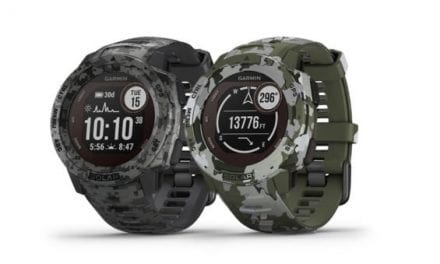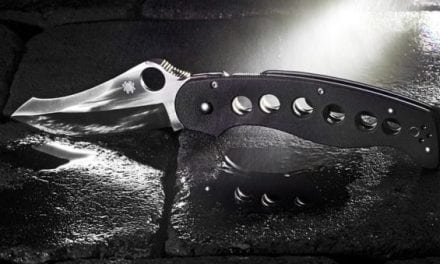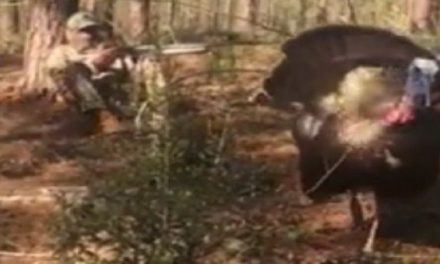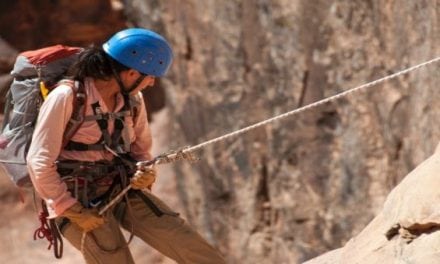If you’re a deer hunter in Nebraska, chances are you have wrapped up or are getting ready to wrap up your season (the late deer hunting season closes at 30 minutes after sunset on Jan. 15).
Question for you: Have you ever considered scouting after the last deer hunting season closes for the remainder of the winter? I have and I do it! Deer hunting is a year-round process and post-season scouting for deer is part of it!
So, why would a deer hunter scout immediately after a season ends through the winter? After all, the next deer hunting season doesn’t open until Sept. 1 (archery), right? Plus, deer will completely re-pattern in spring, summer and fall.
There are reasons to scout for deer after season.
Deer sign is very vivid and concentrated from mid-January through late March. Deer typically “yard up” or group together and are centered on high-energy food to eat, dense thermal cover to bed and open, free water to drink. Additionally, post-season scouting makes you better understand the habits of deer, whether white-tailed or mule.
Post-season scouting allows for a good evaluation of available deer immediately after the hunting season(s).
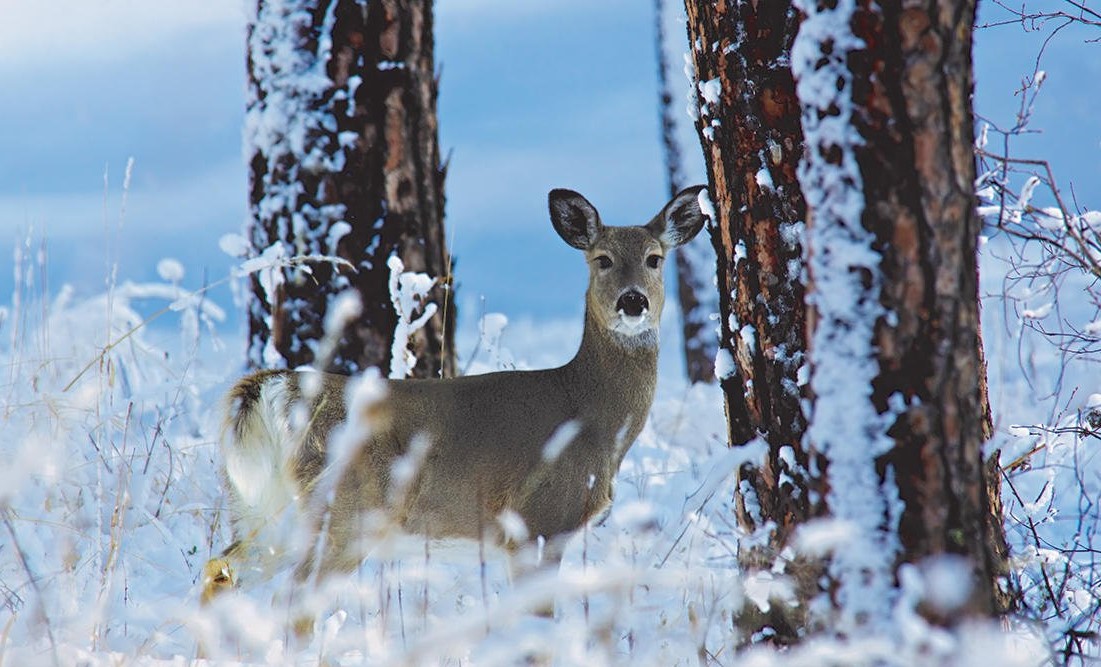
TRANSPARENCY. Main trails, feeding areas, bedding sites and open, free water sources are defined and easy to see this time of year. There is no leafy understory cover or heavy vegetative ground clutter to obscure or block views of deer sign either.
DEER ACTIVITY/SIGN. Active deer trails and beds are quite evident, as are buck scrapes, rub lines and even new tree rubs in woodlands. Deer tracks and droppings in snow cover, mud, disturbed forest litter or crop residue can easily be spotted and all tell a story. These two kinds of sign (tracks and droppings) can indicate the sex, age and size of deer plus the direction of deer travel. Look for a broader trail that’s being well-used by several deer coming and going from food resources to bedding areas. A sole trail that has larger tracks (approximately 3 to 4 inches across and 4 to 5 inches long) should not be overlooked. Watch for drag marks of a buck’s front hooves in fresh or powdery snow. When it comes to droppings, look for a variety of them, but remember that adult deer tend to have bigger droppings or piles of clumped droppings over and inch and a half in diameter.
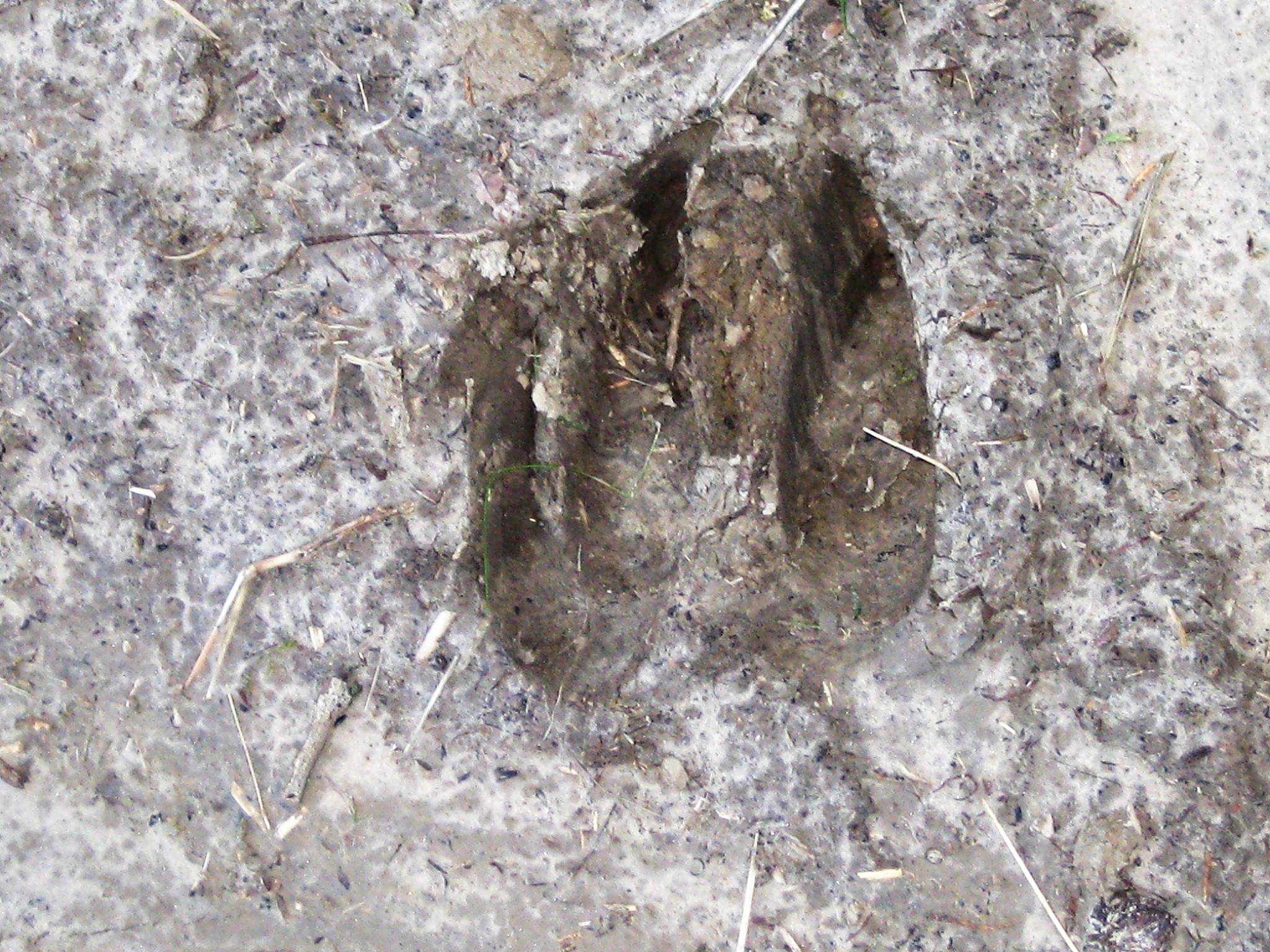
FOCUS ON BEDS. Luke Meduna, Big Game Program Manager for the Nebraska Game and Parks Commission based in Lincoln, emphasizes that hunters scouting in the post-season should focus on locating deer beds. “You can tell a bedding area for does and fawns versus bucks. Does and fawns bed in groups while bucks normally bed singly and have larger-sized depressions. Bucks prefer to bed up against something on a hillside or higher spot where they can use their senses to their advantage.” Meduna adds that now is the best time for a hunter to identify all of that.
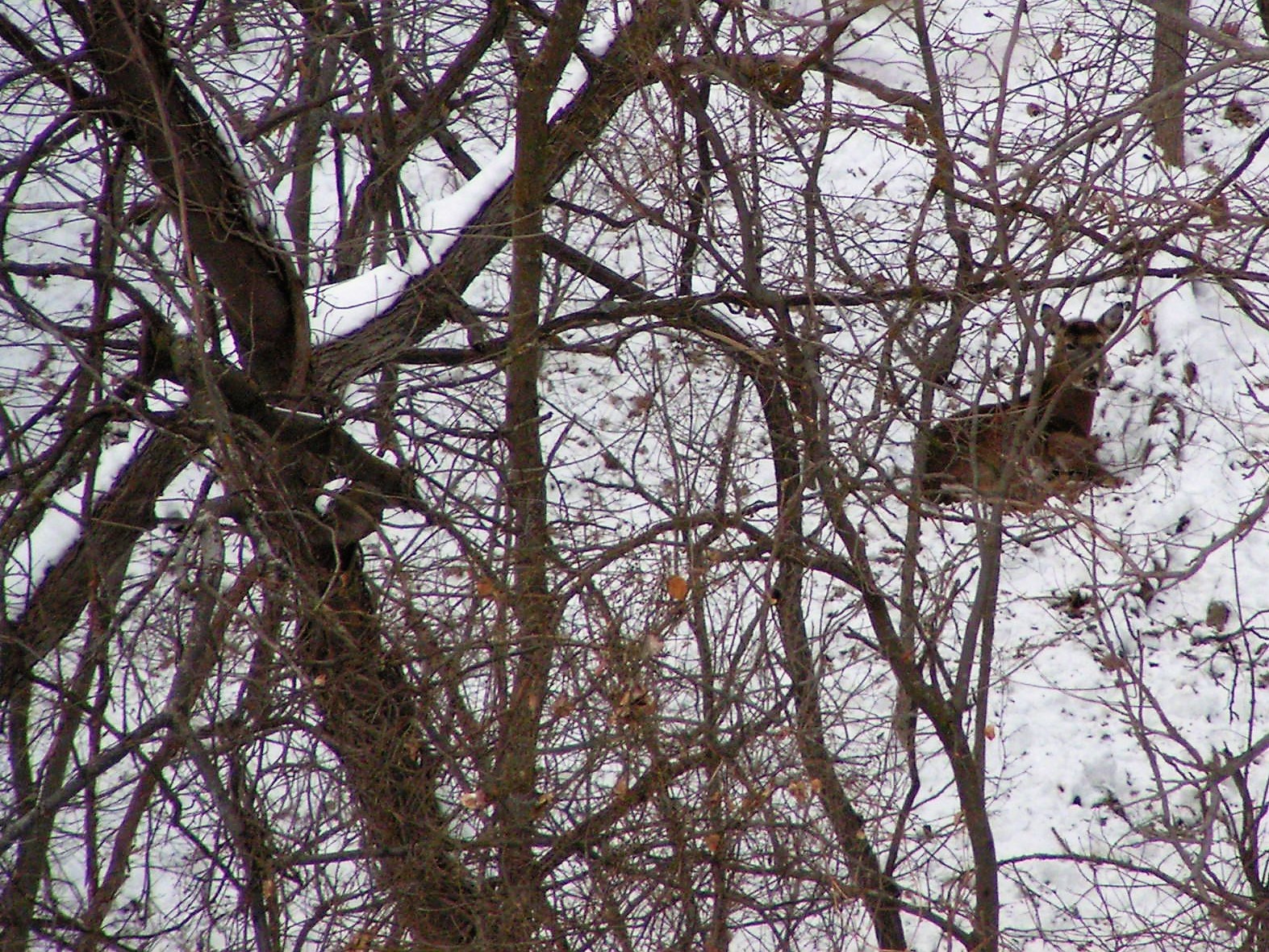
FIND SHEDS. Shed antlers found in after-season deer scouting ventures can disclose what bucks most likely made it through the hunting season(s) and how big they might be. The bonus of post-season scouting for deer is acquiring a few shed antlers for your collection. Keep an eye out for those just off busy deer trails near lower-hanging tree limbs, in thickets, over fences, across creeks and close to deer beds.
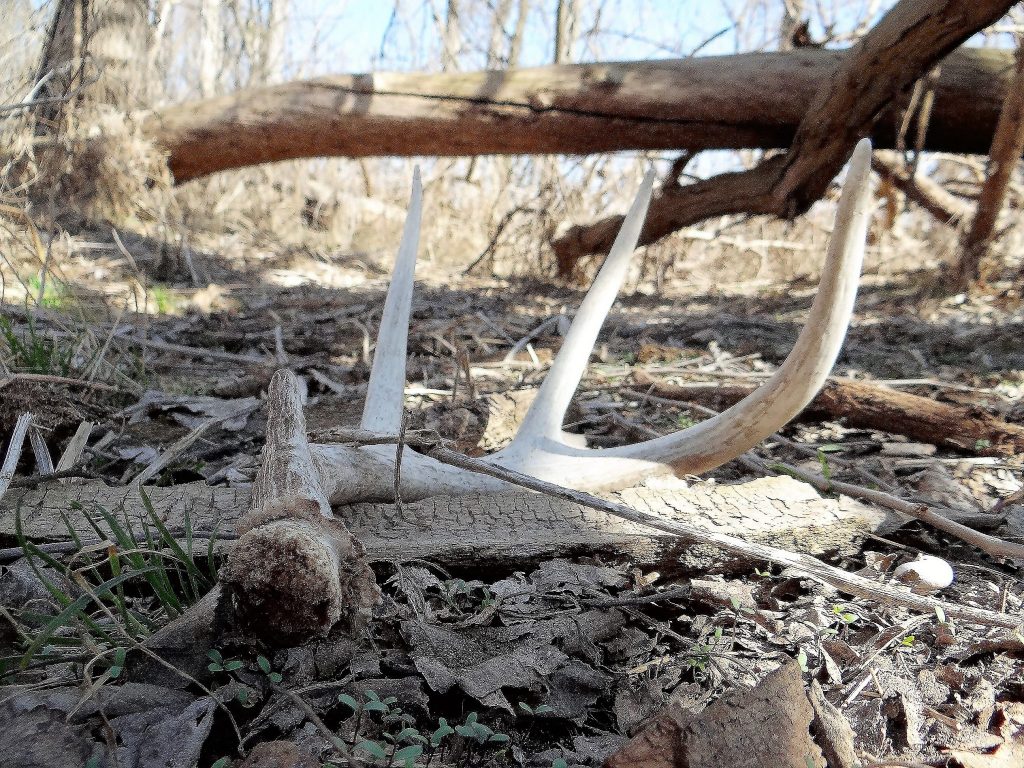
GLASS. Use binoculars when scouting and survey what I call: “The bigger picture,” that is, how those active deer trails interconnect, relate to the terrain and form deer corridors. Natural funnels and pinch points can be more clearly observed.
HANDY CAMERAS. Strategically placed motion-activated game or trail cameras sure come in handy in the wintertime to assess the size and health of deer remaining in your area, even though deer may relocate or move depending on the herd’s size or composition, doe numbers, availability of food, etc. You can even come to identify individual deer. Also, use the camera on your Smartphone or iPhone to capture all kinds of images or video from your after-season scouting expeditions.
USE TECHNOLOGY. From the high-tech, satellite imagery of Google Earth to the latest hunt/land feature apps such as OnX, these types of technology offer the deer hunter great visual references and GPS coordinates. This information can assist in marking terrain features and main deer trails, noting distances between stands or blinds, and bringing into focus potentially high deer usage areas. The use of modern mapping software saves time and helps to narrow down areas to scout on foot.
STEALTHY SCOUTING. When scouting in the field, be sure to treat it as you would a still hunt for deer. Wear camouflaged clothing and a little blaze orange (for safety to be seen), practice scent control, play the wind, slow down, be as quiet as possible and minimize contact with deer. Do not repeatedly disturb them!

TREESTAND PLACEMENT. For the deer hunter, winter is also the perfect time to select good, straight, sturdy trees for treestand placement since there are no leaves present. Furthermore, this time of year is a good one for clearing shooting lanes since there aren’t any bugs around and the temperatures are quite cool.
TAKE NOTES. Keep and organize notes of your post-season deer scouting jaunts and visits with landowners about deer movement. Record-keeping is important. Remember, each trip to your hunting area reveals something new about deer in the landscape.
National Football League Hall of Fame quarterback and Vietnam veteran, Roger Staubach, once was quoted as saying: “It takes a lot of unspectacular preparation, to get spectacular results.” I believe this quote directly applies to deer hunting. If you are willing to put in the time, hard work and analysis throughout the year, including during the post-season, the odds of harvesting deer, especially high quality bucks, dramatically increase.

The post Post-Season Scouting For Deer appeared first on NEBRASKALand Magazine.

